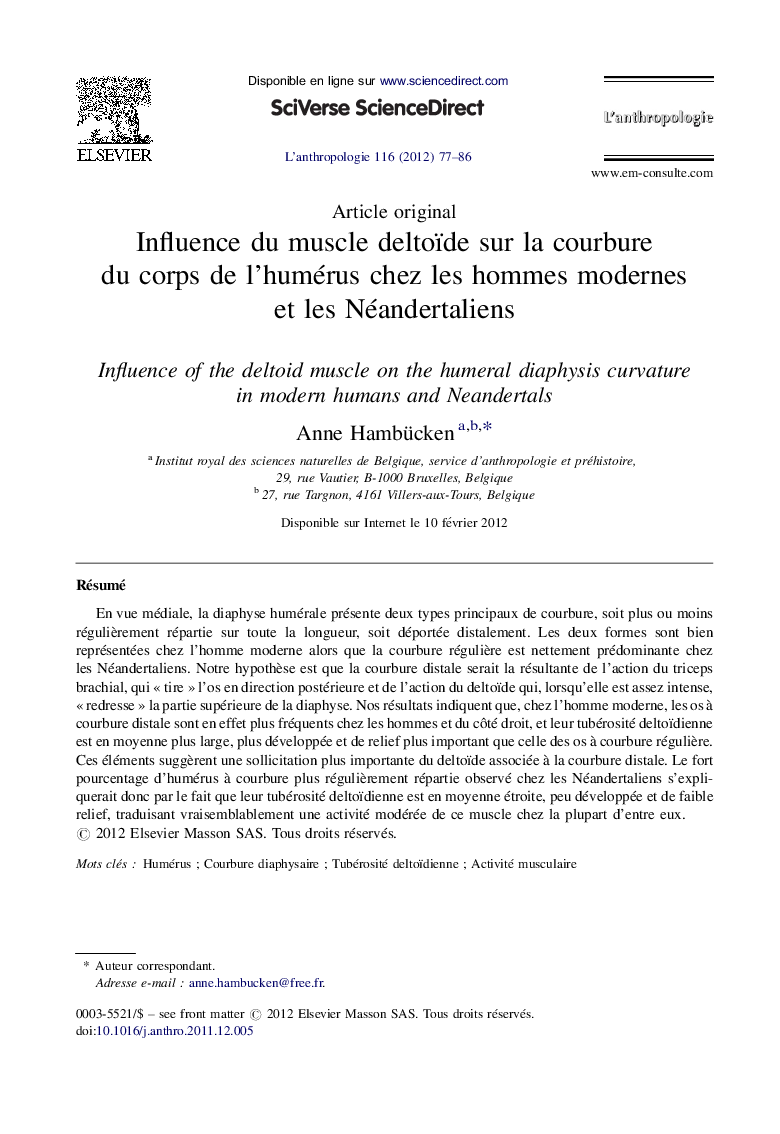| Article ID | Journal | Published Year | Pages | File Type |
|---|---|---|---|---|
| 1033687 | L'Anthropologie | 2012 | 10 Pages |
Abstract
When observed in medial view, the humeral diaphysis shows two main types of curvature. It can be either more or less regularly distributed along the bone, or distally deported. Both types are about equally represented among modern humans, while the “regular” type largely prevails in Neandertals. Our hypothesis is that the distal curvature is the resultant of the action of the triceps brachial that “pulls” the bone in the posterior direction and of the deltoid that, in some cases, would be powerful enough to “straighten” the superior part of the diaphysis. Our results indicate that, in modern humans, bones with a distal curvature are indeed more frequent in males and on the right side and that their deltoid tuberosity is on average wider, more developed and more prominent as compared to bones with a regular curvature. This suggests a stronger solicitation of the deltoid muscle associated to this morphology. The high percentage of humeri showing a regular curvature observed in Neandertals would therefore be explainable by the fact that their deltoid tuberosity is averagely narrow, poorly developed and forming a weak prominence which likely attests of a moderate activity of this muscle in most of them.
Related Topics
Social Sciences and Humanities
Arts and Humanities
History
Authors
Anne Hambücken,
